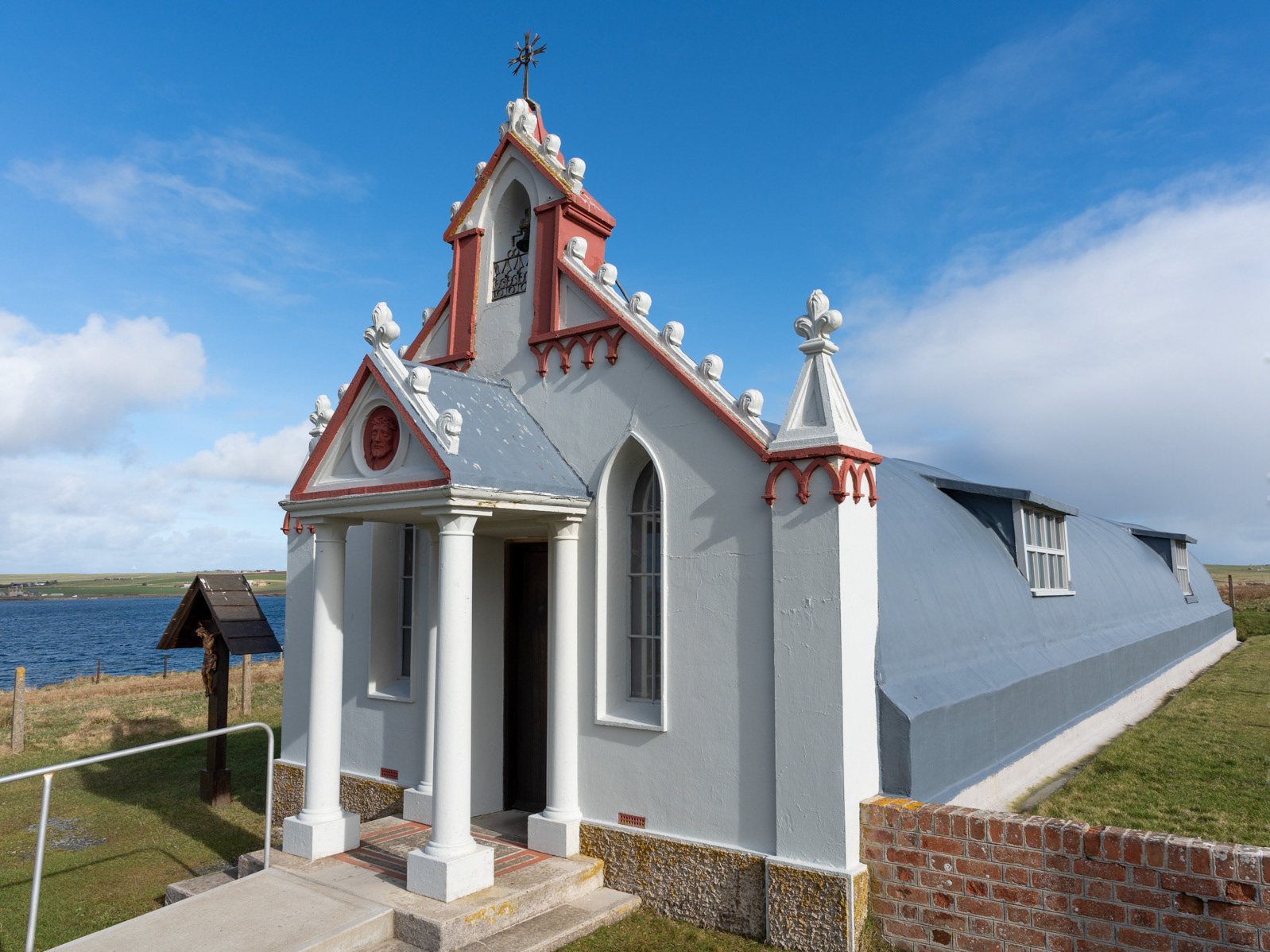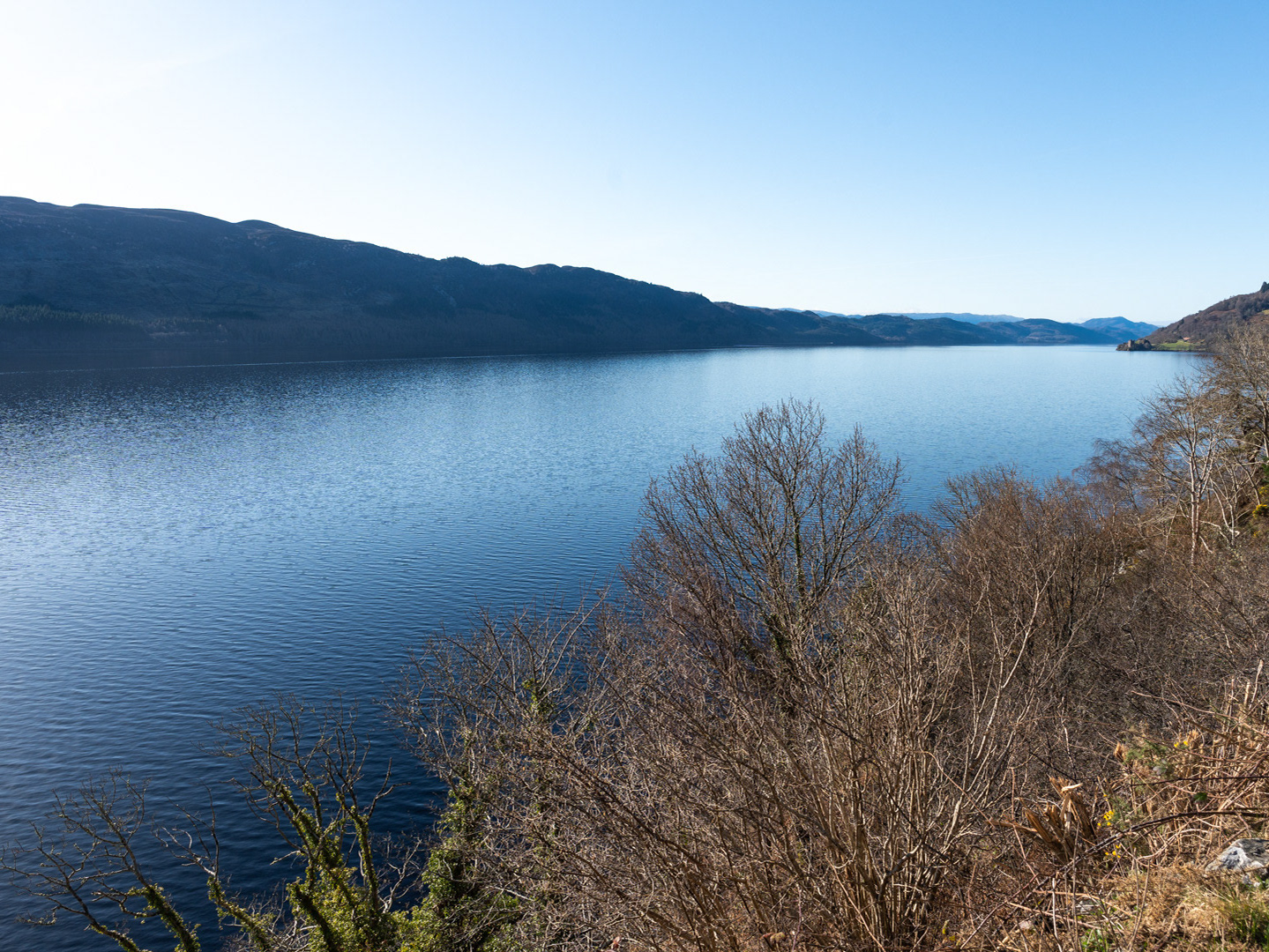Our first day in the Orkney Islands of Scotland began with crisp temperatures and a gloriously sunny, blue sky. It didn't last long, though, as the sun alternated with the wet and cold, while we explored the over 5,000 year old stone monuments of the "Heart of Neolithic Orkney" UNESCO World Heritage Site. This site, which is a vast landscape of sacred monuments that once formed a highly important religious center, is located on a narrow peninsula between two bodies of water (the Loch of Harray and the Loch of Stenness). Bound by hills in the center of a huge, natural amphitheater, it is believed to have been a locus of a vibrant prehistoric Neolithic society, whose presence is found throughout the Orkney Islands.
View from our holiday rental, overlooking the town of Stromness on Orkney Island.
Highlights of the visit were Maeshowe, a massive burial tomb considered the "finest Neolithic building" in northwest Europe, aligned so its interior is illuminated for 10-days at the Winter Soltice; the Stones of Stenness, a ceremonially henge dominated by huge standing stones set around a central hearth; the Ring of Brodgar, a massive stone circle and henge, which was the focus of ritual activities for thousands of years; and the Ness of Brodgar, a recently discovered temple and ceremonial complex, found at the peninsula's narrowest point, nestled in amongst the larger stone monuments, and thought to be a place of pilgrimmage and celebration. We also found time to visit Skara Brae, a unique complex of subterreanian houses that is the most complete Neolithic village in northwest Europe; and the Broch of Gurness, a substantial 3,000-year old Iron Age settlement with a massive stone tower (or broch) at its center.
And these are only the best known! There are a great many monumental Neolithic prehistoric sites found throughout the Orkney Islands, all under the care of Historic Scotland and others. Nearly all can be visited, and this is in addition to Orkney's many other younger Pictish, Norse, and Medieval historic sites.
Maeshowe
Maeshowe (pronounced Mays-How) - No photography is permitted inside the burial tomb, but a great stone chamber stands at the hearth of this large earthen mound. Archaeology suggests the site was something other than a tomb originally, perhaps a stone ritual platform or henge, but it became a tomb circa 3000-2700 BC. A wonder of engineering, the tomb is constructed of massive, overlapping stone slabs running almost its full length, some weighing several tons. These are covered with layers of clay to make it waterproof. The entrance chamber is 7 meters long and 1 meter high, while the interior chamber is nearly 4 meters tall at its highest and just as wide at the finished stone floor. It has a corbelled roof and the walls are of dressed stone. Aside from the entrance, each of the interior's side walls is pierced by a single side cell, built of the same dressed stone. During the Viking period and again in recent centuries, the tomb was entered through the roof, and the walls are covered with graffiti in Norse runes. During the winter soltstice for approximately 10 days, the setting sun shines from above the horizon across the top of the nearby Barnhouse Stone, onto the rear wall of the burial chamber, illuminating the entrance to the back cell.
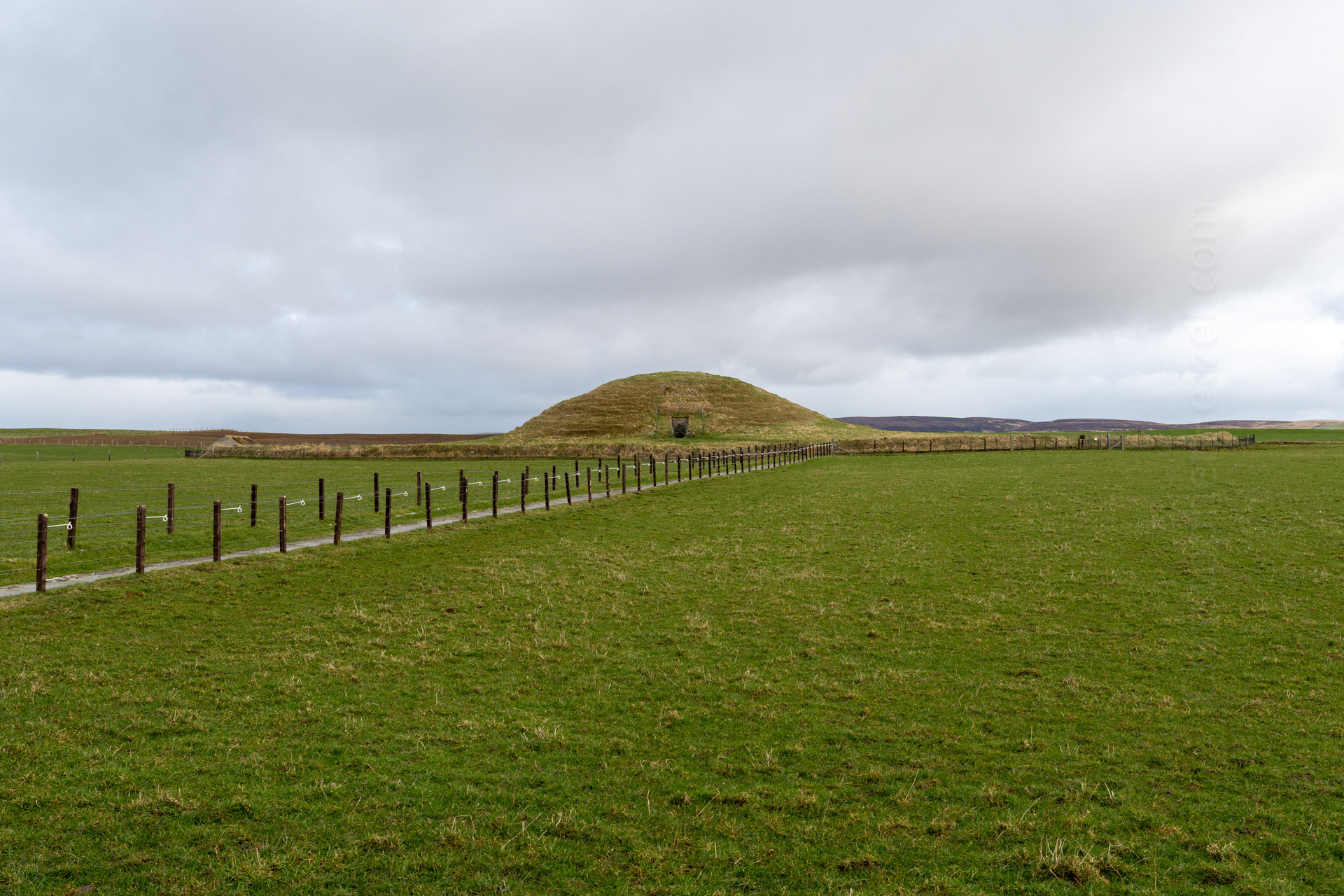

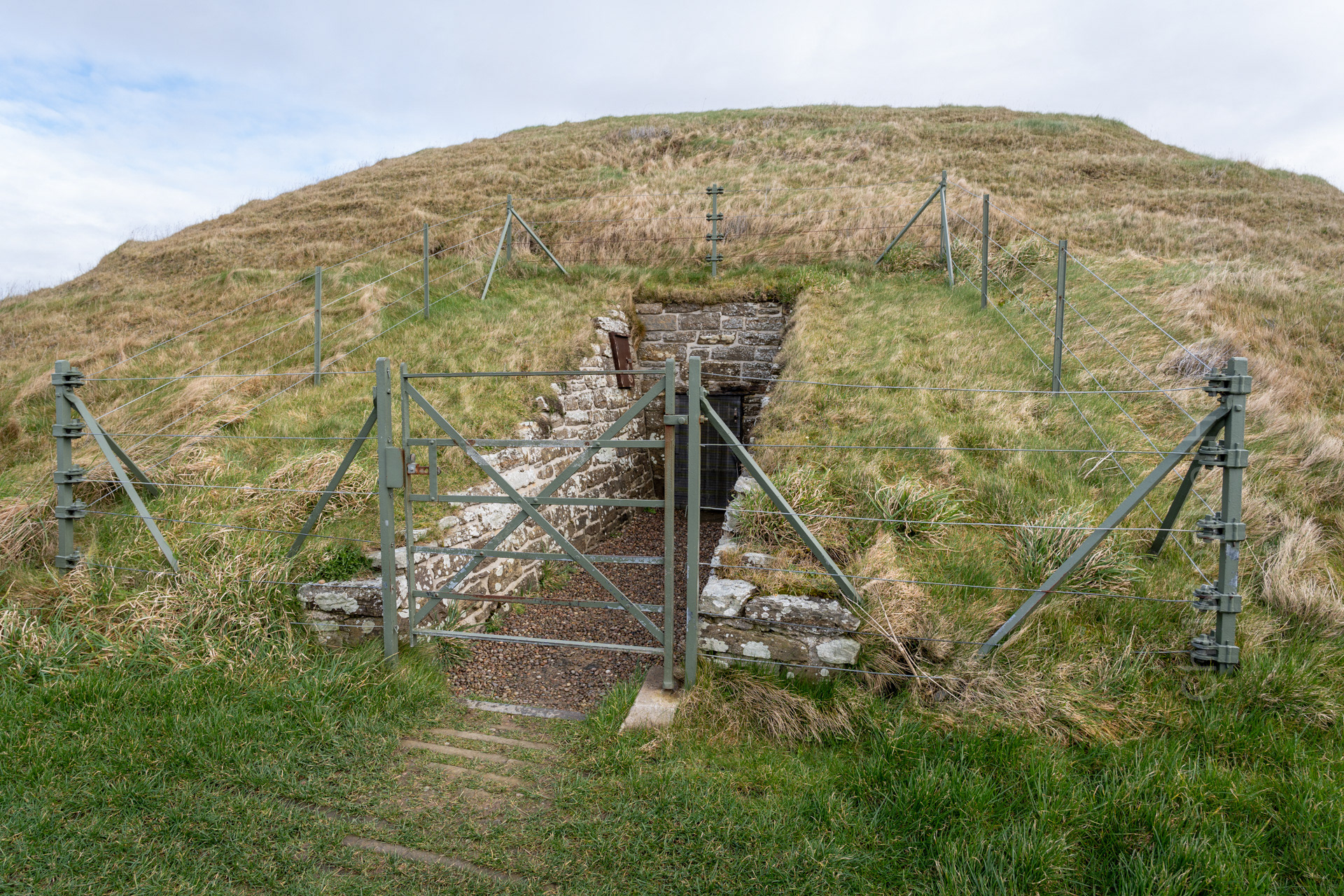

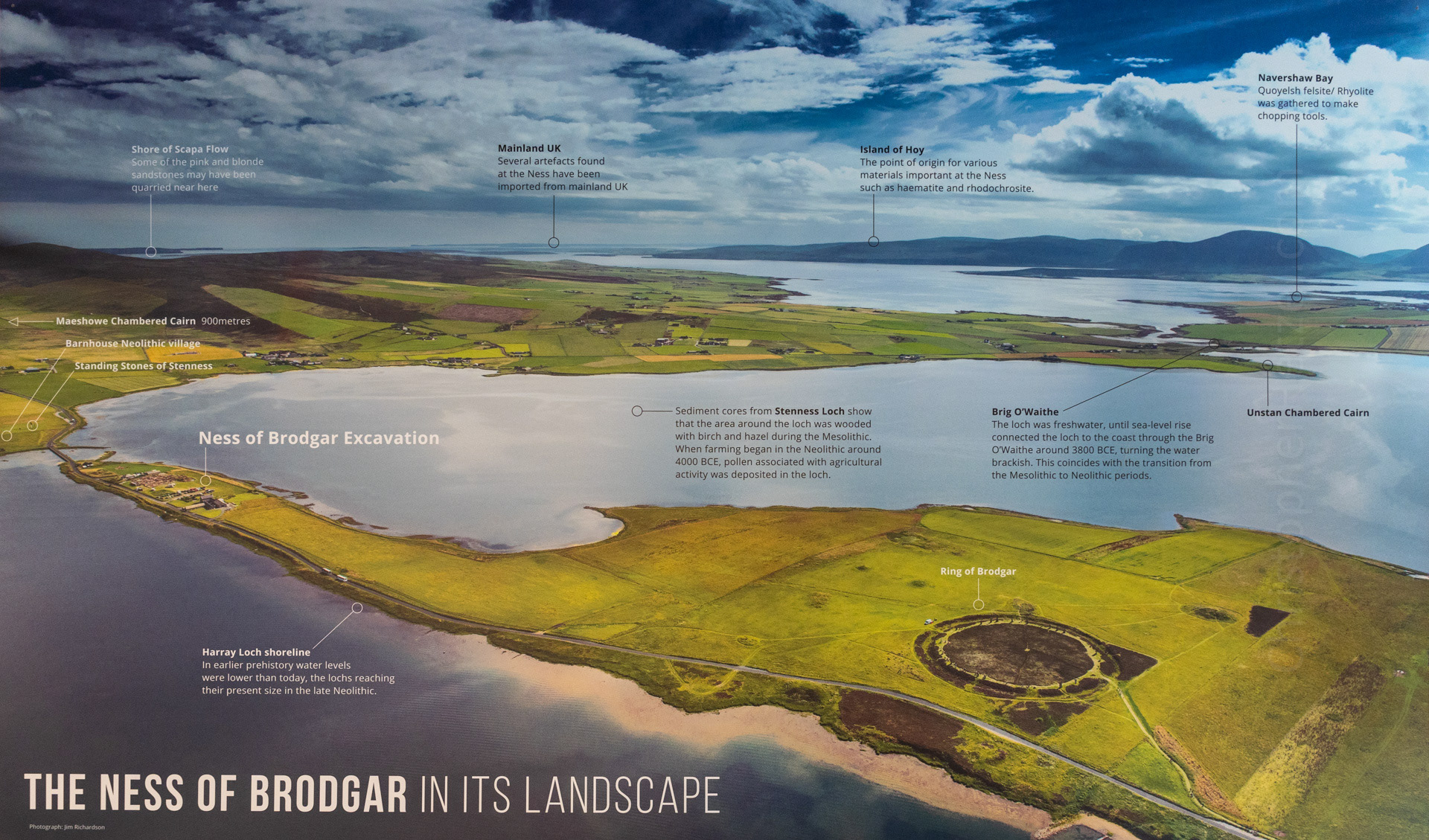
Stones of Stenness
The Stones of Stenness are the remains of a ceremonial henge and platform, dating as far back as approximately 3100 BC. In the middle of the site is a large stone hearth, which is believed to have connections to the remains of Barnhouse, a nearby Neolithic village site. Over time, as many as 12 standing stones were erected around the hearth. Only a few of these remain, and like others in the area, they all have sharply angled tops. It's unknown what the standing stones are meant to represent, but some have drawn connections between the stones and the surrounding hills on the horizon. Nearby, there used to be three other isolated standing stones, seemingly related to the monument - the Watchstones and the Odin Stone. Only one Watchstone remains intact, and the Odin Stone was pulled down by a farmer in the early 19th century. His neighbors were not happy about this, and attempted to burn down his farmhouse several times in retaliation.
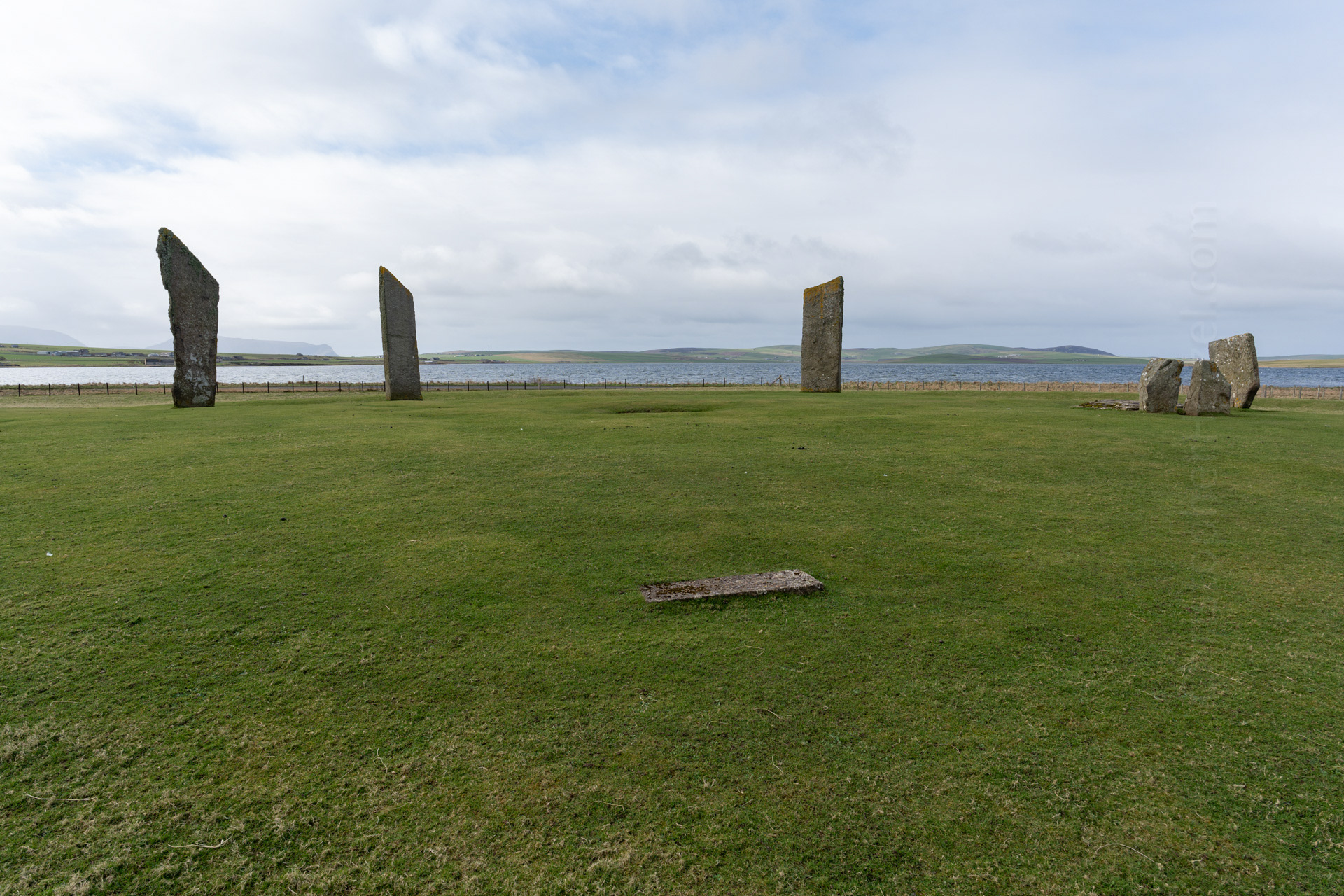

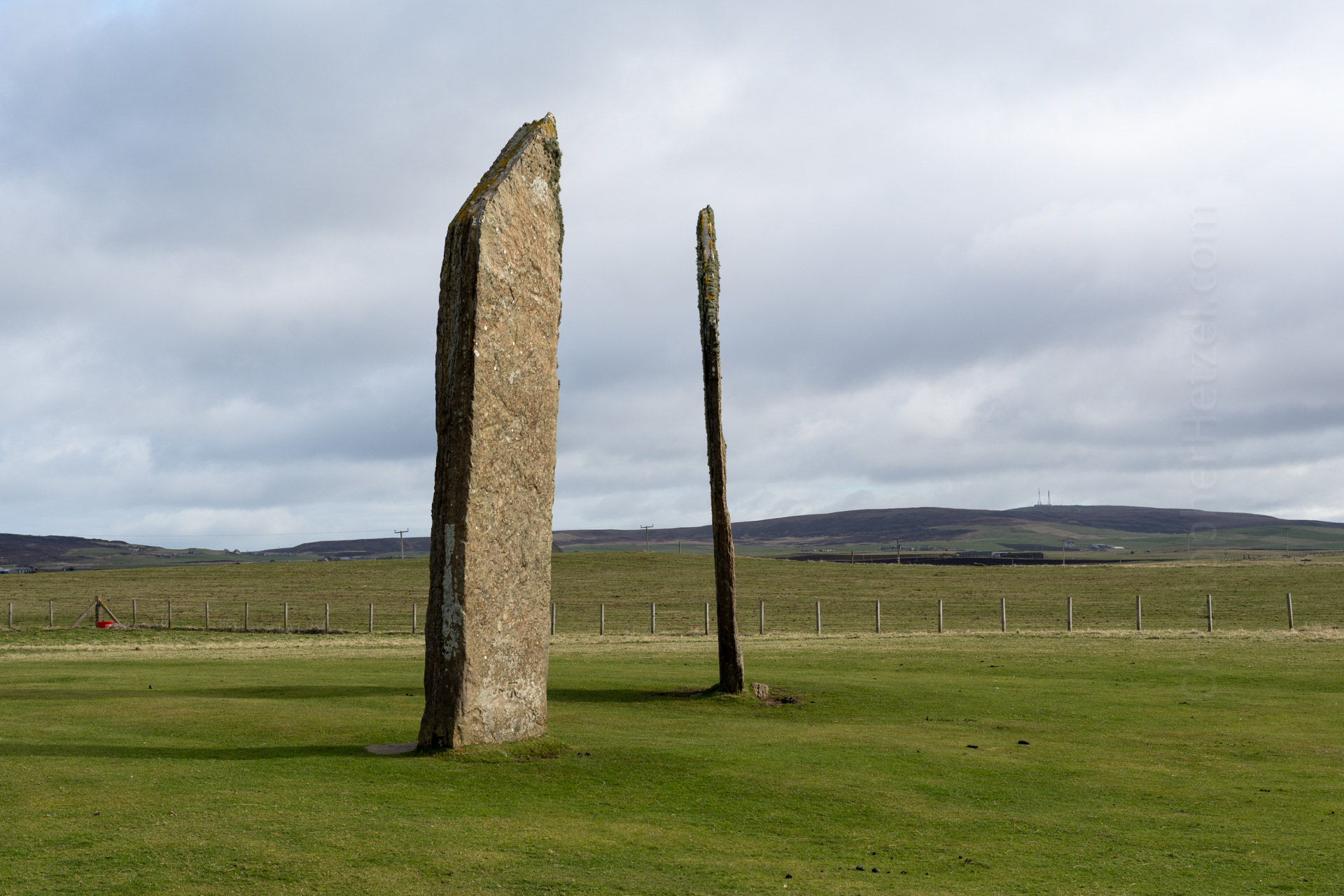
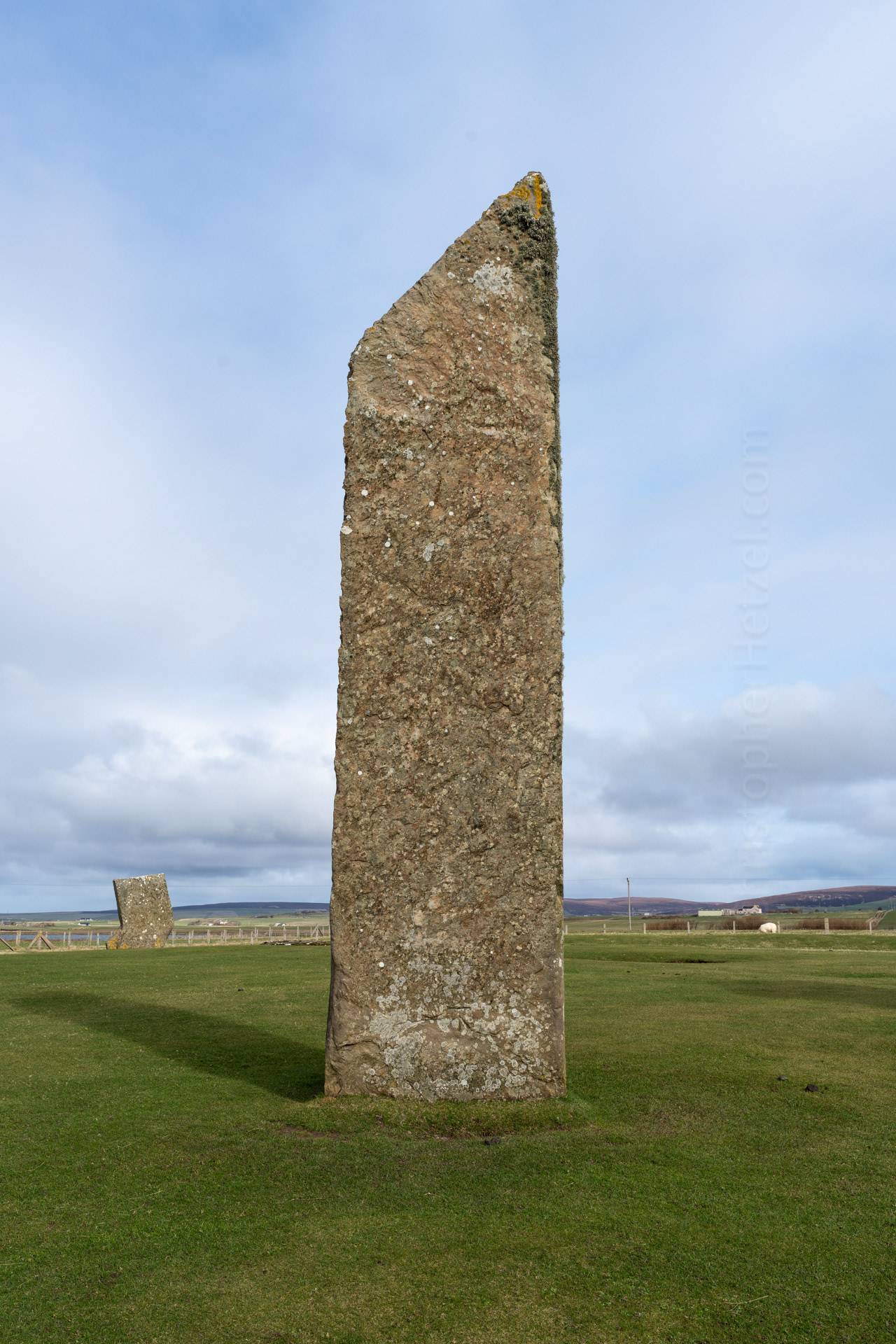
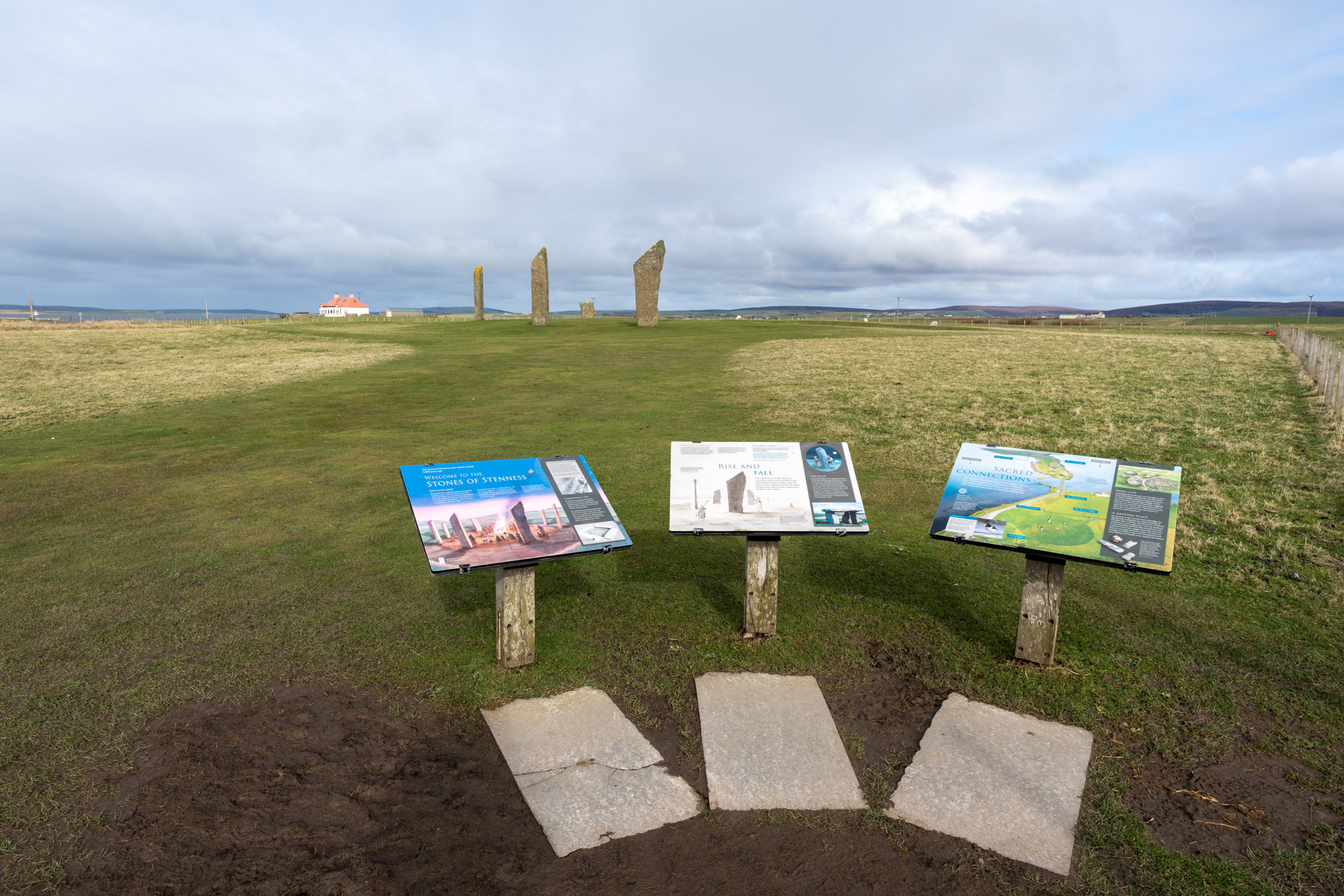
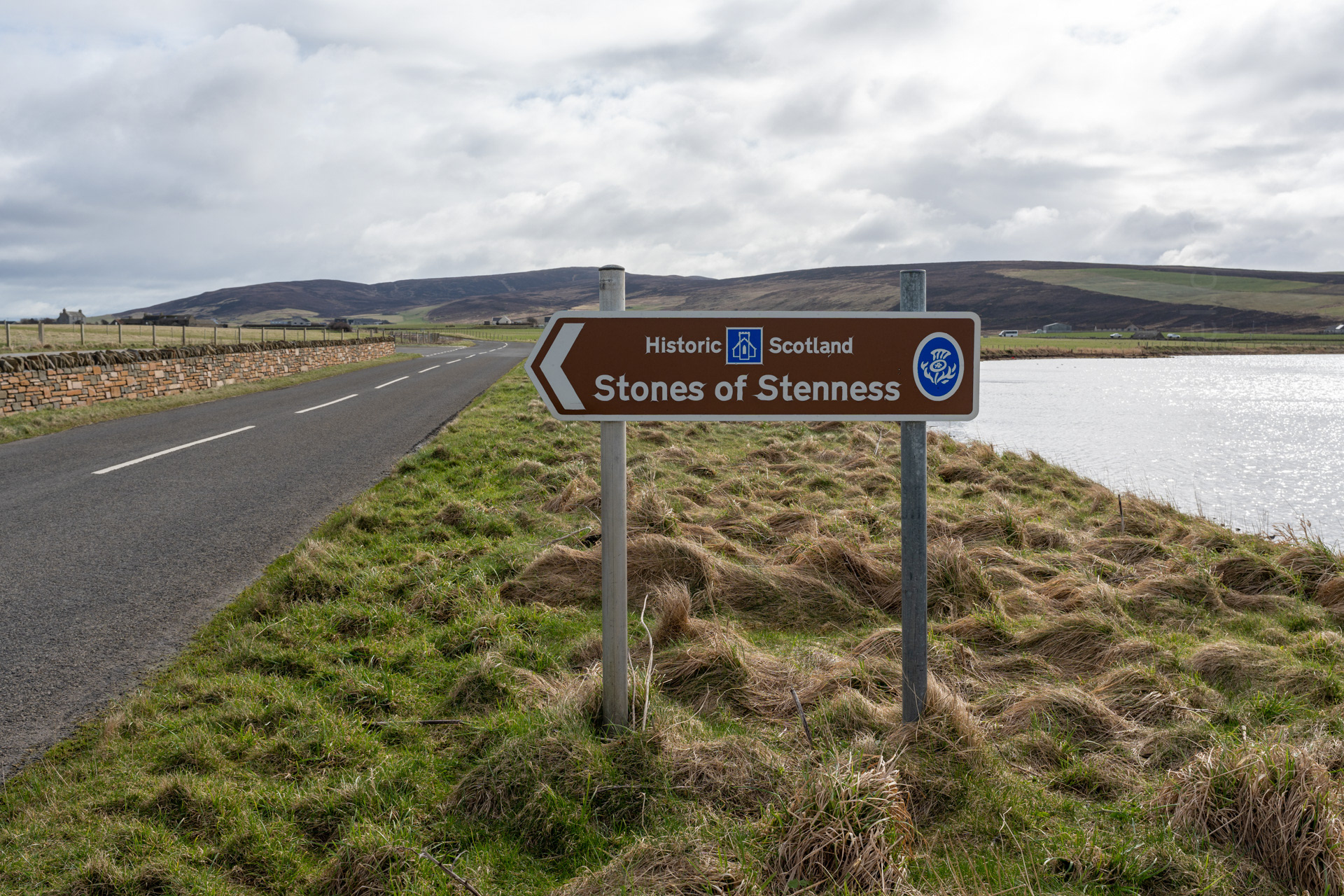
Ring of Brodgar
According to legend, the Ring of Brodgar is believed to have once been a band of fearsome giants, now forever petrified in stone. One night, these giants had gathered in a field between the lochs of Stenness and Harray and began to dance to the sound of a fiddle. So entranced, they forgot to watch for sunrise and turned instantly to stone once the sun's first rays crested the horizon. The nearby Comet Stone is believed to have been the fiddler, who was also petrified. In reality, the ring is a massive henge of standing stones sited relative to the horizon, which was once an important ceremonial center. The ring is about 104 meters in diameter, surrounded by a wide ditch cut 3 meters deep and 10 meters wide into bedrock. Two causeways serve as entrances to the ring, across the surrounding ditch. The ring and its central platform are thought to pre-date the henge's standing stones. However, little in the way of formal archaeology has been conducted at the site, so there are still lots of questions. Originally the henge may have had 60 standing stones, but only 36 survive today. Of these, many were re-erected in recent centuries. All of the surviving uprights have a characteristically angled top. During World War II, the ring was used for tank training, the stones and ditch functioning as an obstacle course.
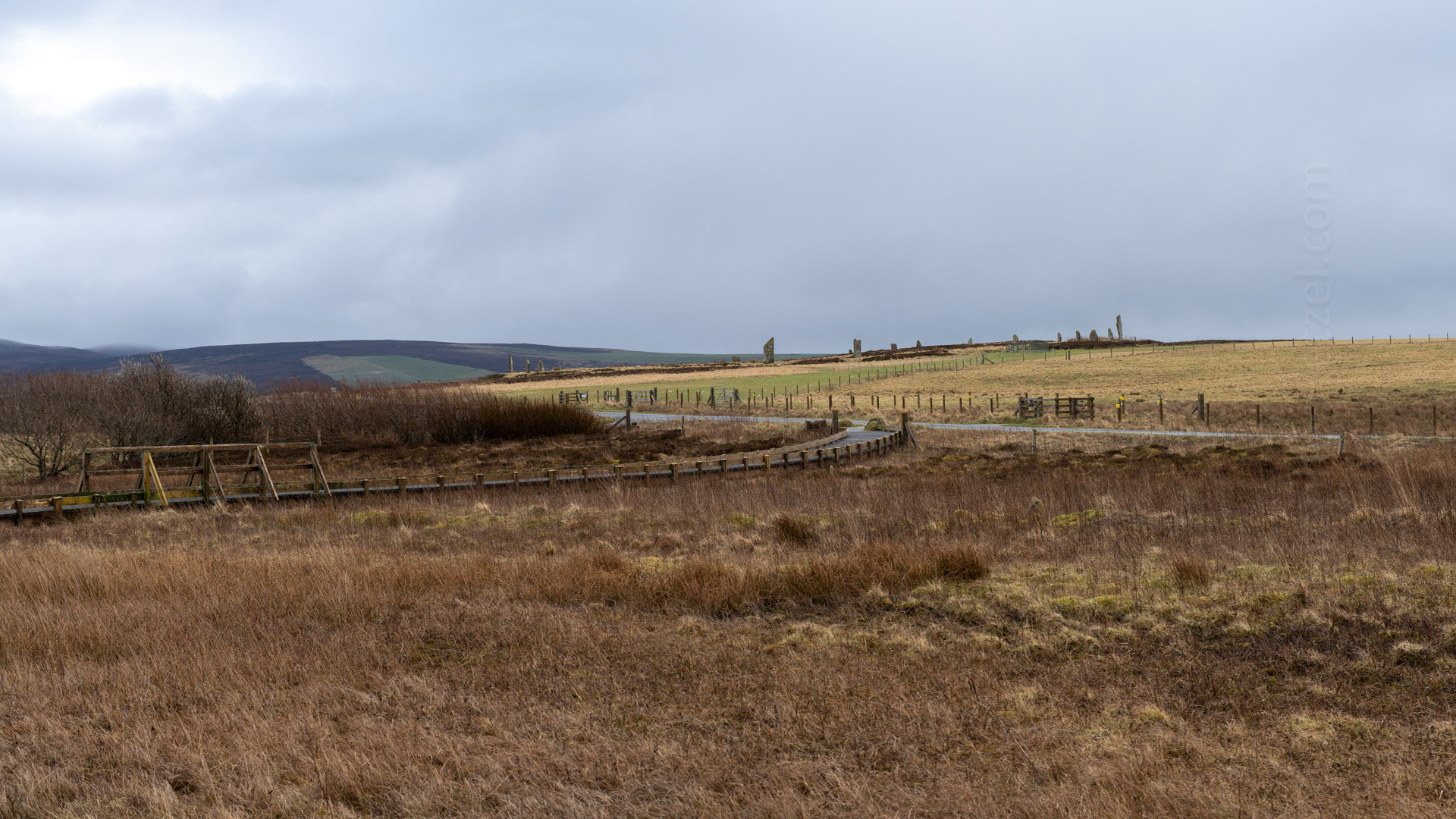
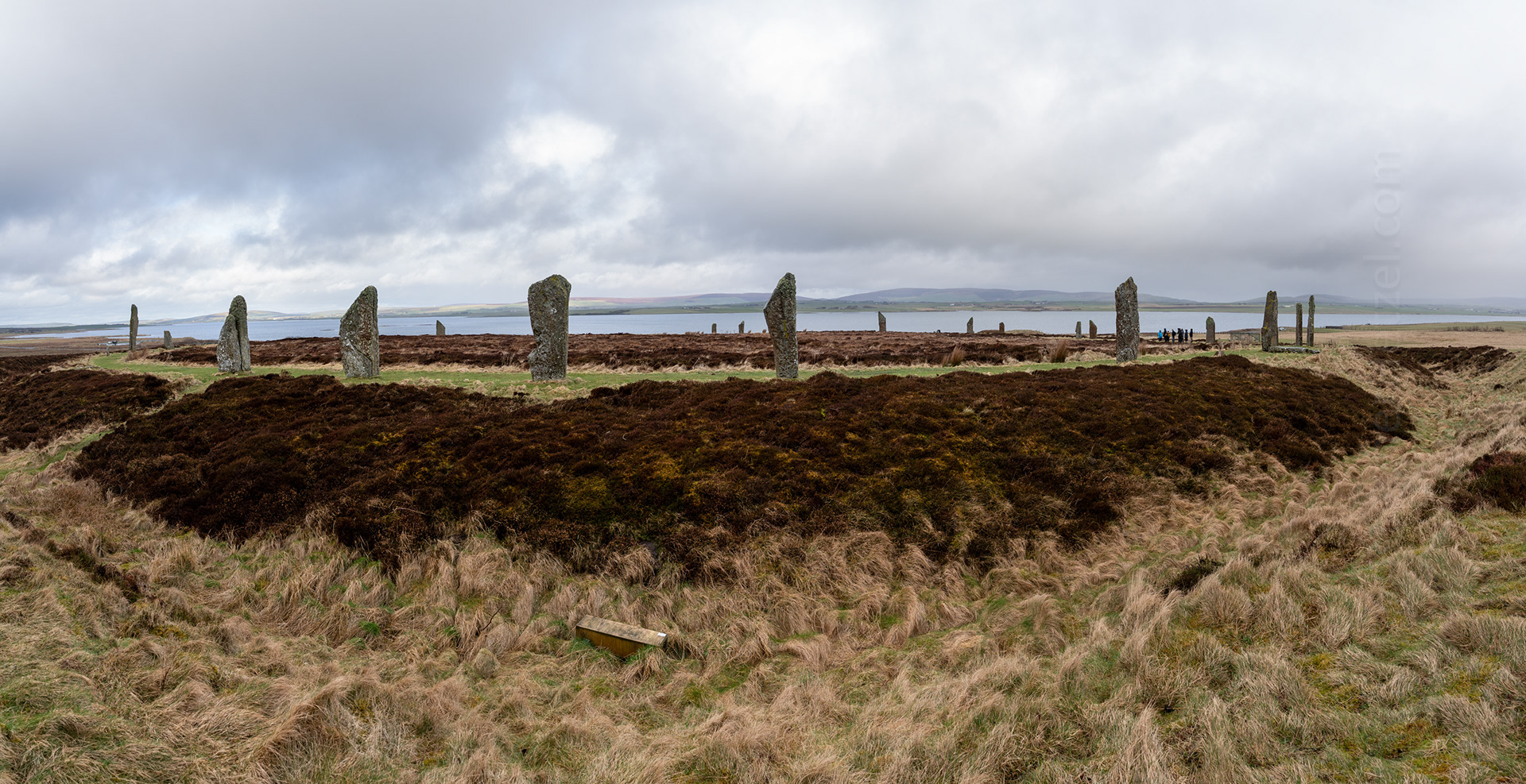
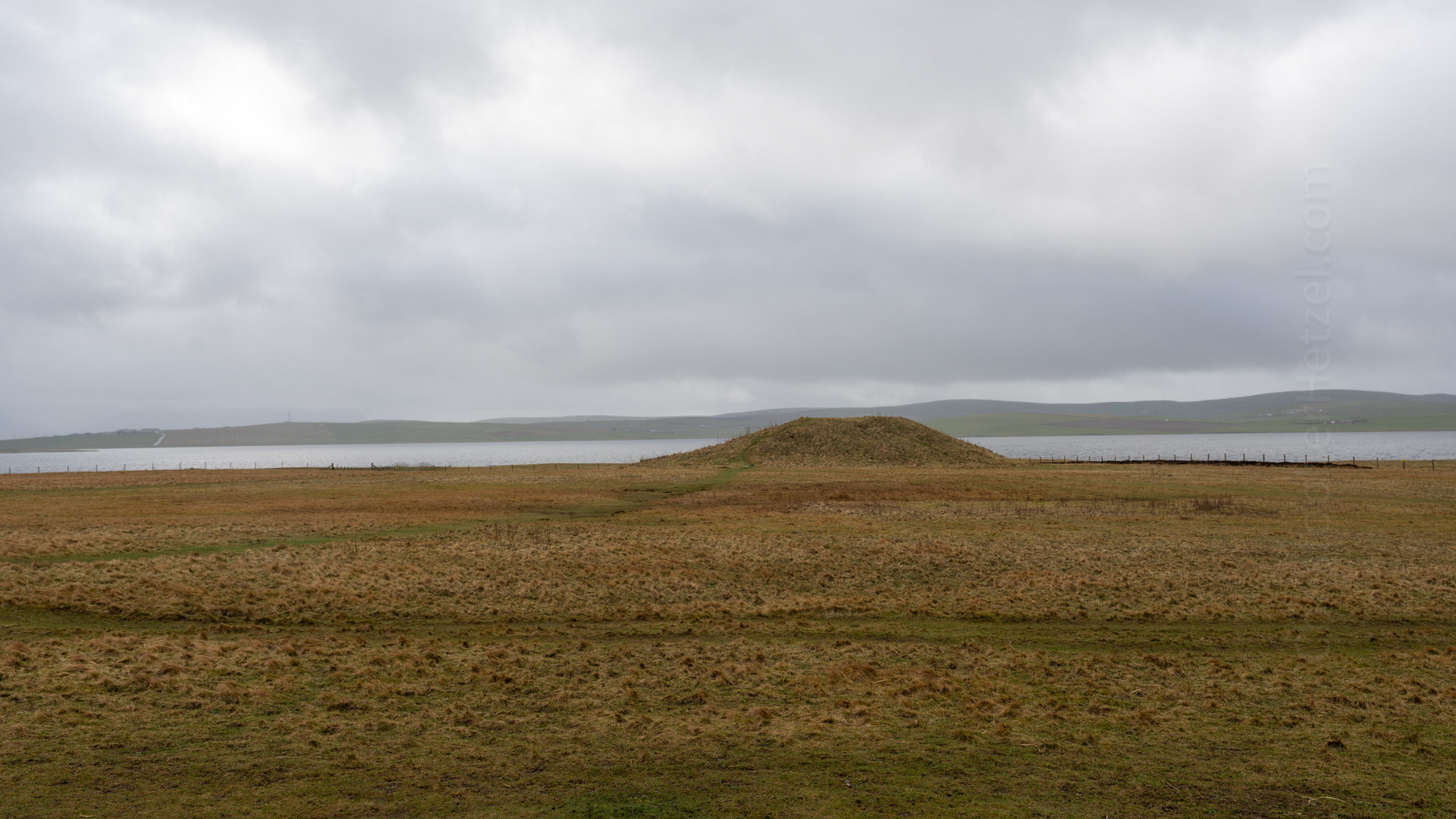
Roughly the same size as nearby Maeshowe, Salt Knowe was once thought to also contain a stone tomb. However, recent investigations have failed to find evidence for any internal structures.
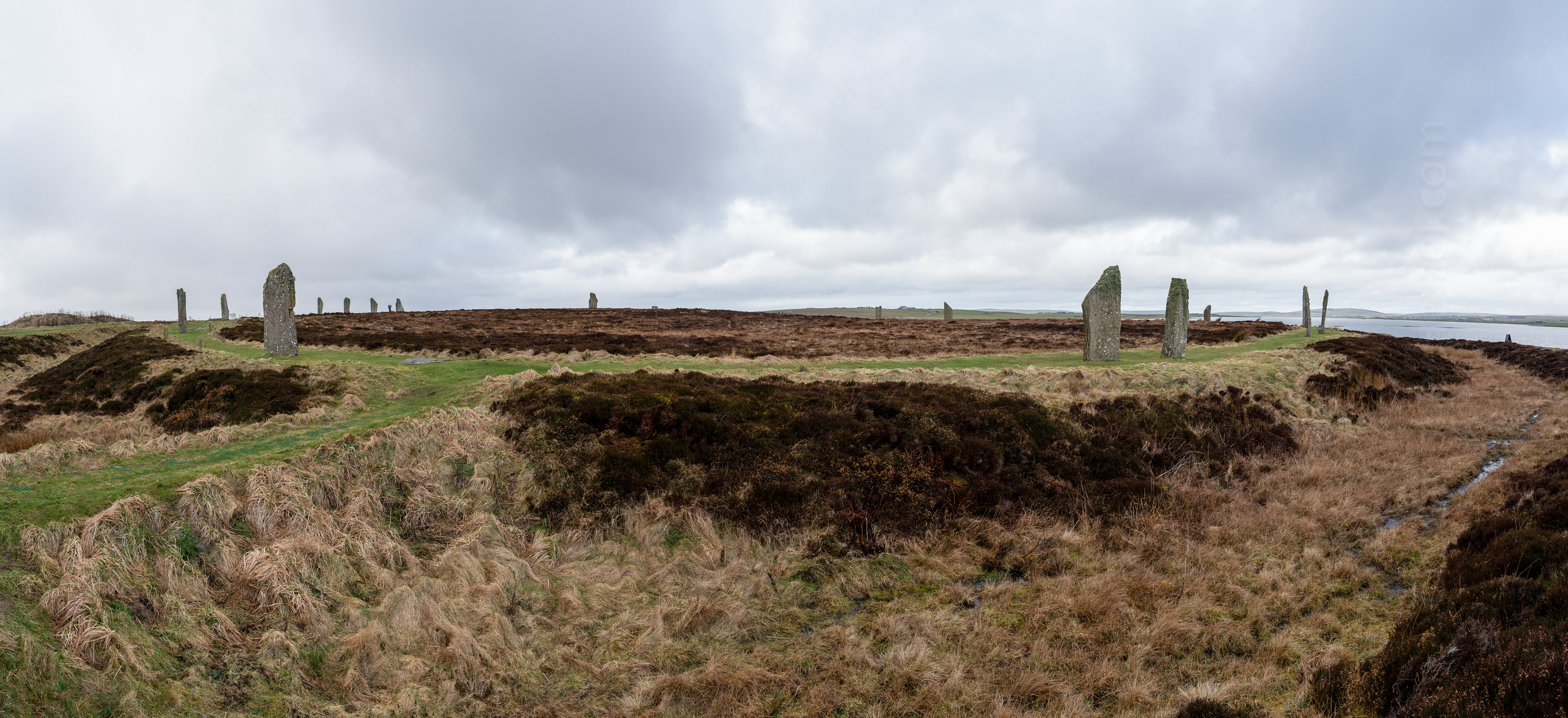
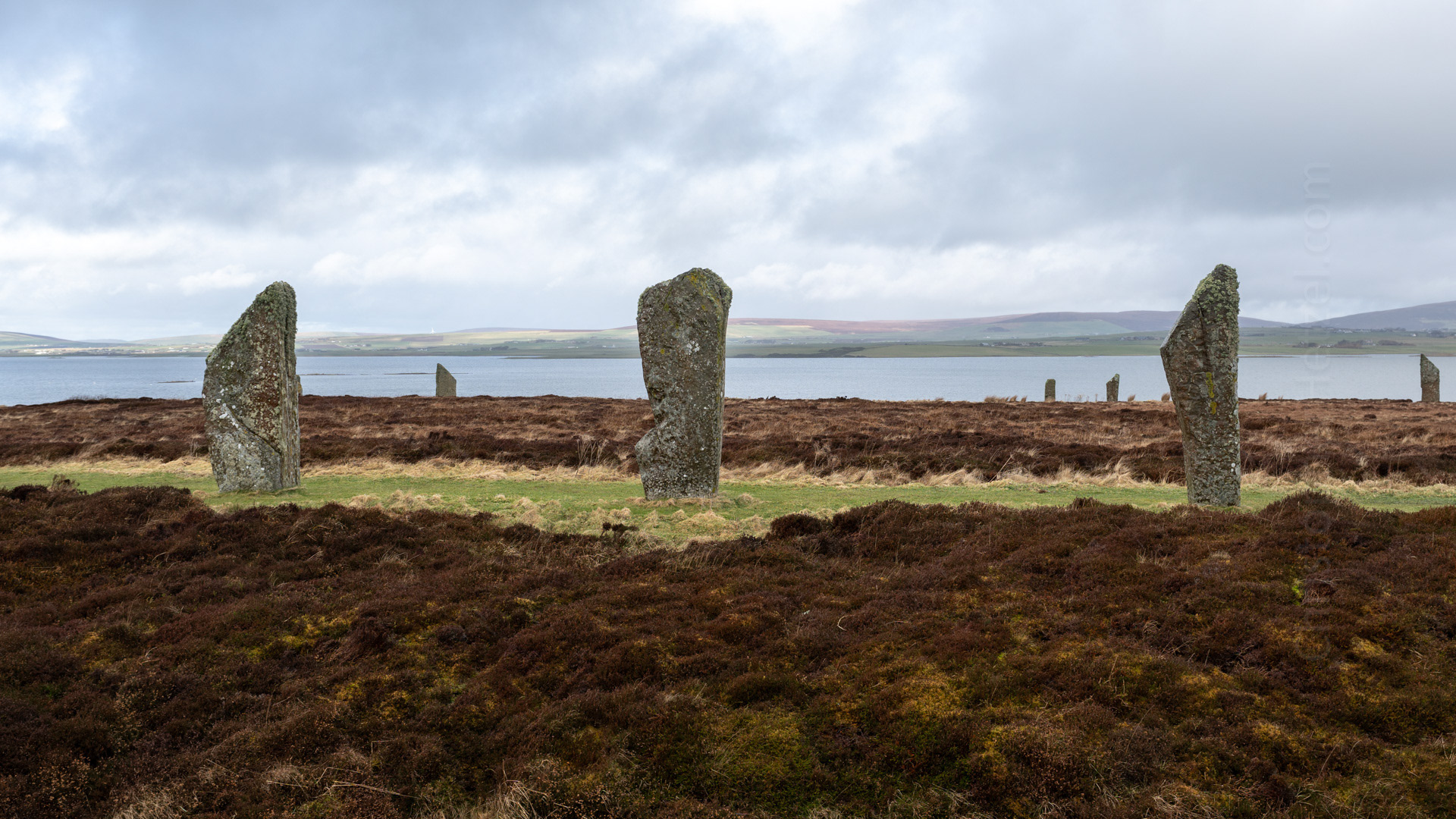

Two stone cists (boxes) were found in this mound, when it was excavated in 1845, each containing cremated remains. One of the burials has been dated to 1745-1566 BC, centuries after the Ring of Brodgar was built, showing that the ring continued to be a significant place long after it was constructed.

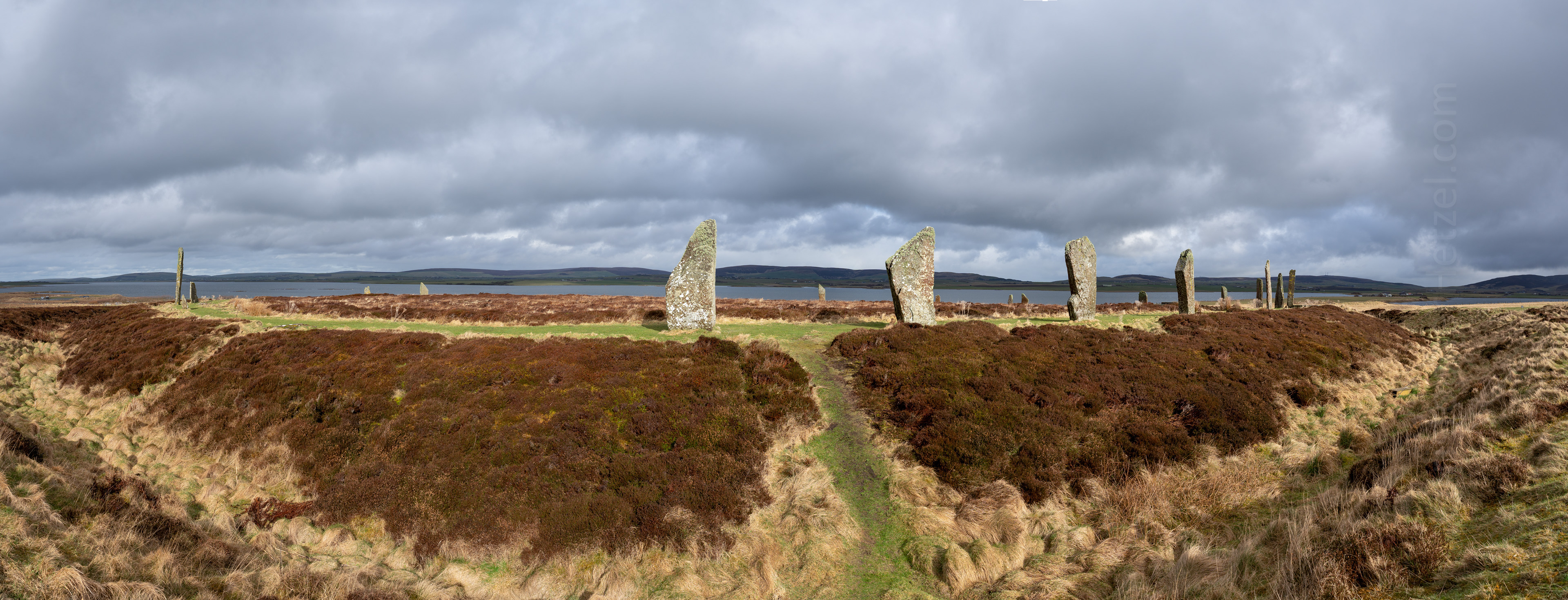
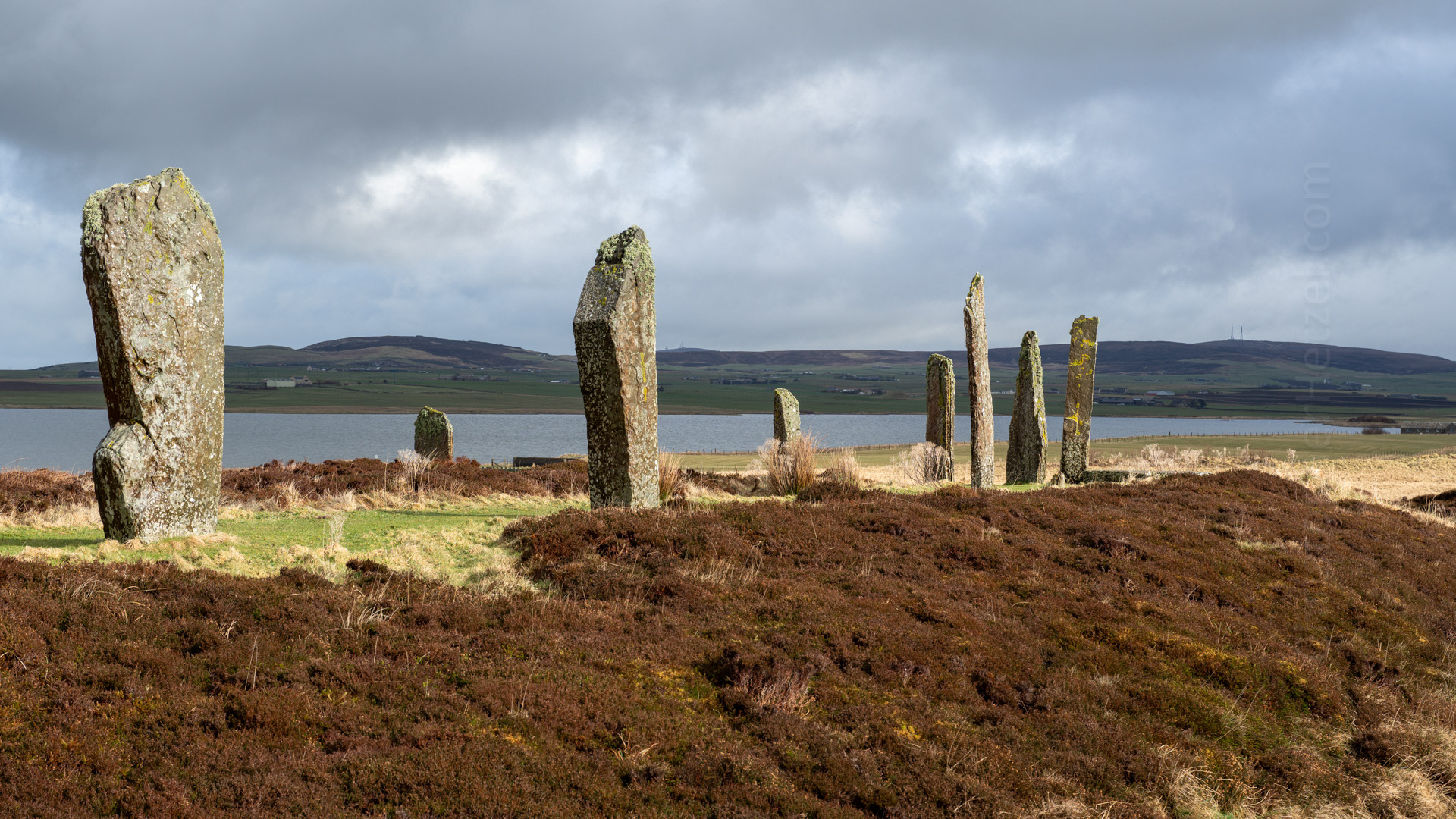
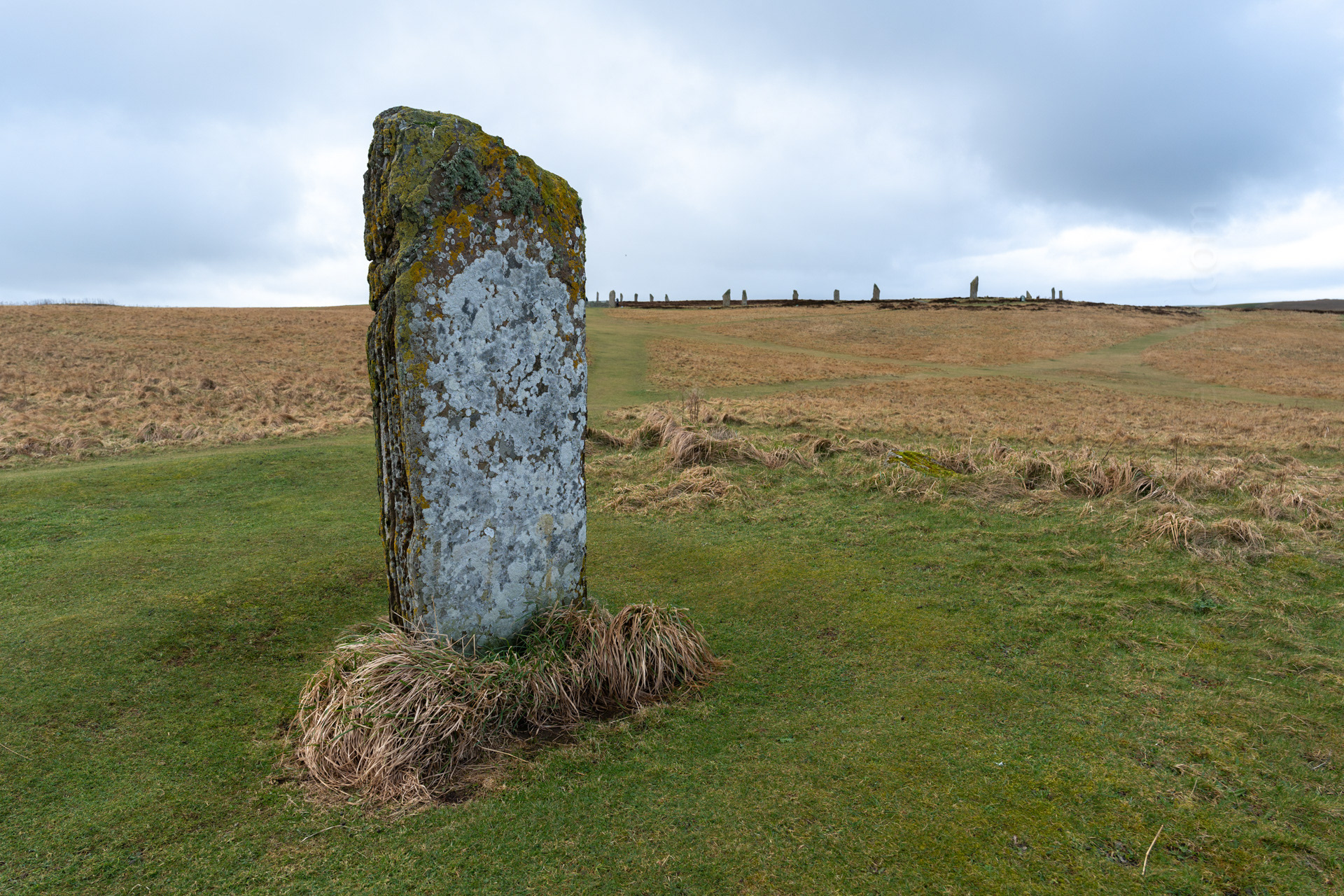
A short distance from the Ring of Brodgar, this stone is believed to have possibly been an important point for viewing the ceremonial sites on the peninsula. In folklore, it is said to have once been a giant fiddler who played for the dancing giants of the Ring of Brodgar and turned to stone alongside them.
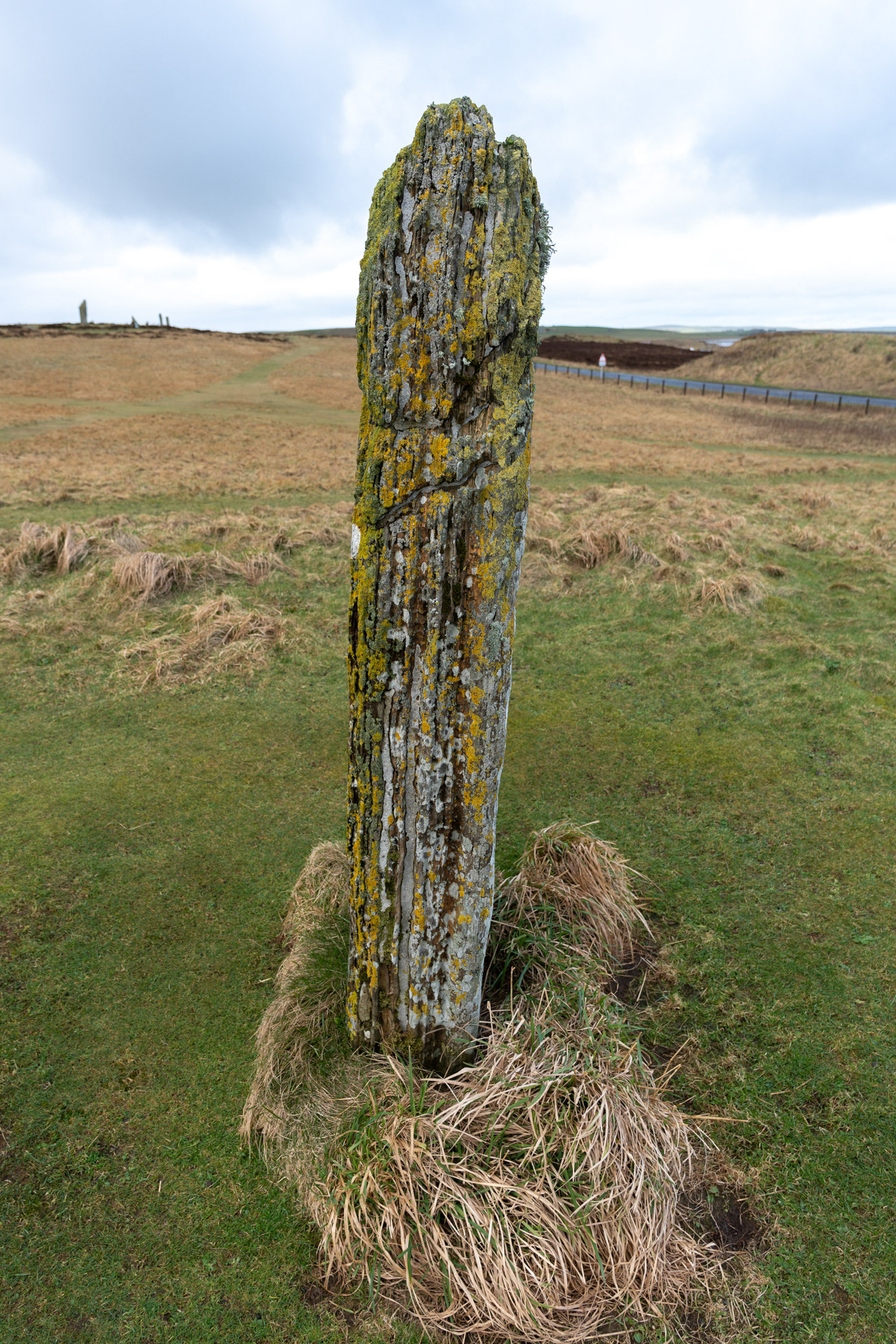
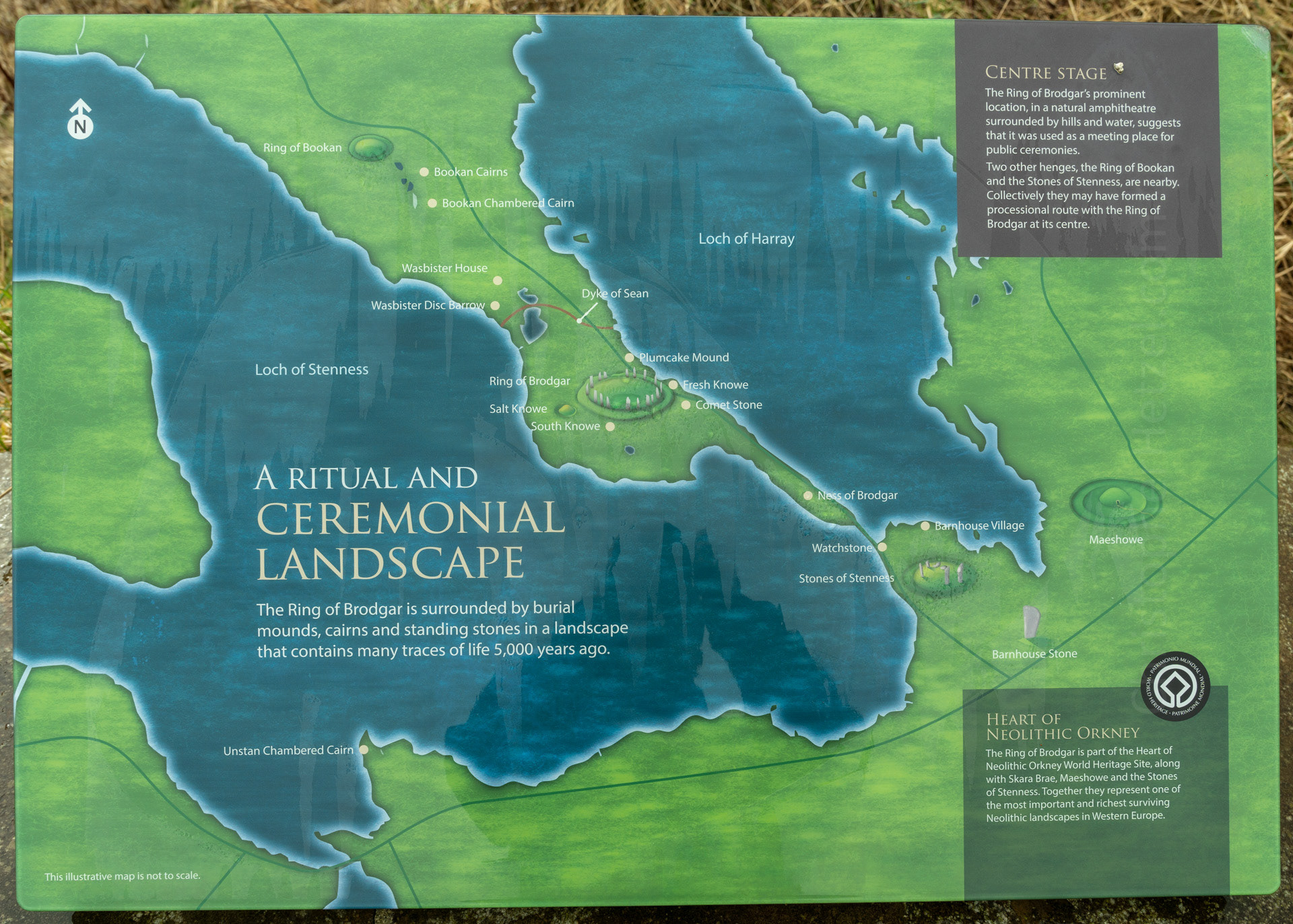
Return to Scotland
